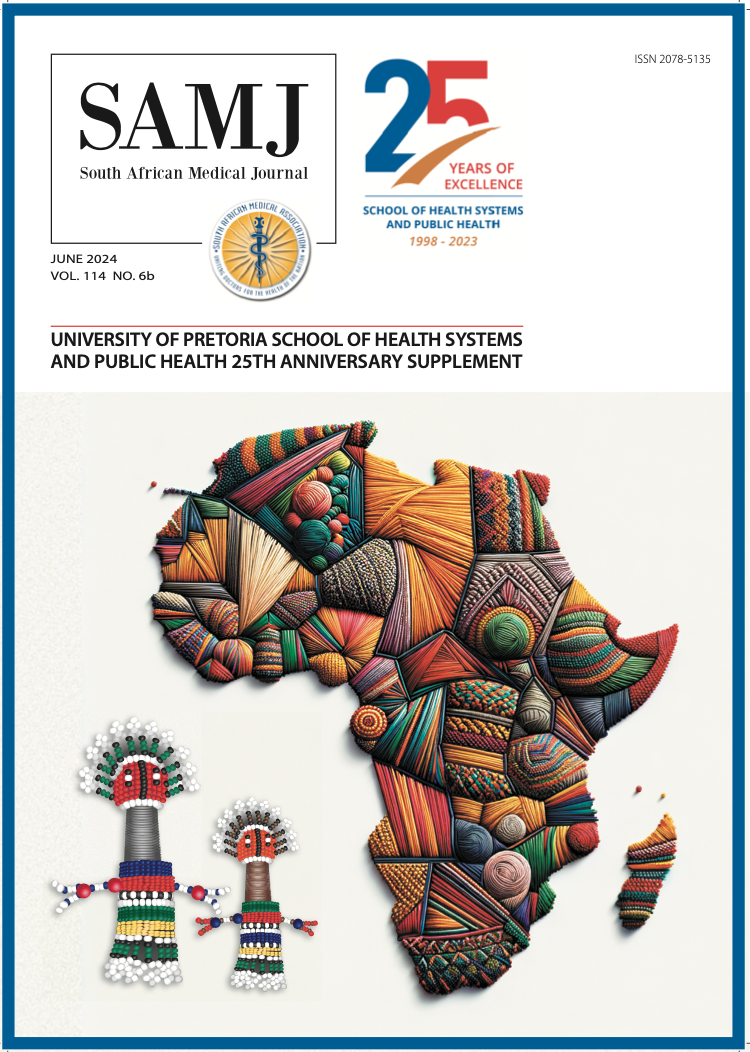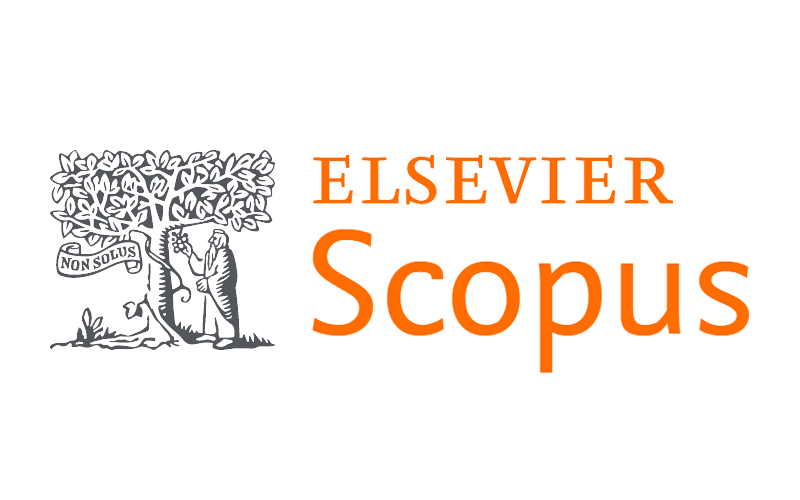Evaluation of choices and time spent on an open online elective course by undergraduate medical students during the COVID-19 pandemic
DOI:
https://doi.org/10.7196/SAMJ.2024.v114i16b.1385Keywords:
Massive Open Online Courses, MOOC, COVID-19, Medical students, Pre-clinical studies, ElectivesAbstract
Background. The COVID-19 pandemic highlighted the weakness of relying on in-person tuition in higher education. Massive open online courses (MOOCs) have been a successful addition to higher education. In this study, educators had to replace a planned elective in the medical curriculum with an online option during the pandemic. The roles of the competency framework of the Health Professions Council of South Africa (HPCSA) (Leader and Manager, Health Advocate, Professional, Communicator, Collaborator, Scholar, and Healthcare Practitioner) were used to guide its development. This elective emphasised the non-clinical roles of medical practitioners and was offered in 2020 and 2021.
Objectives. To describe the choices of third-year medical students and time spent participating in a modified online elective in 2020 and 2021.
Methods. A descriptive cross-sectional study design was used, involving the participation of 629 medical students. Data were collected and analysed from three primary sources: registration data from LinkedIn Learning, data from the Foundation for Professional Development, and self-reported estimates by students of the average time spent on selected courses. Data included identification of the associated competency acquired. Data analysis was conducted using Python, version 3.10.11.
Results. The course choices of 629 students were analysed. In 2020 there were 300 participants and in 2021 there were 329. All the students had one compulsory inclusion in the elective (Management and Leadership Short Course for Undergraduate Healthcare Students). Students in both years reported spending the most average time on courses related to clinical knowledge (Healthcare Practitioner), followed by financial literacy and management (Professional), diversity management (Collaborator), and priority actions to identify and/or respond to (Health Advocate). The most popular courses related to the Leader and Manager role were around decision-making in human resources, problem-solving, and managing healthcare teams. Based on the top 10 LinkedIn Learning course selections of both cohorts, there appeared to be a preference for courses that were consistent with the role of medical professionals in practice. The most popular LinkedIn Learning course was The Six Morning Habits of High Performers.
Conclusion. Students gravitated toward courses aligned with their role as professional doctors within the HPCSA competency framework. More studies are needed to understand how medical students develop the six non-clinical roles in the HPCSA framework and the effectiveness of MOOCs in a medical curriculum.
References
Liyanagunawardena TR, Adams AA, Williams SA. MOOCs: A systematic study of the published literature 2008-2012. Int Rev Res Open Distrib Learn 2013;14(3):202-227. https://doi.org/10.19173/ irrodl.v14i3.1455
King M, Pegrum M, Forsey M. MOOCs and OER in the Global South: Problems and potential. Int Rev Res Open Distrib Learn 2018;19(5). https://doi.org/10.19173/irrodl.v19i5.3742
MaxwellWD,FabelPH,DiazV,etal.MassiveopenonlinecoursesinUShealthcareeducation:Practical considerations and lessons learned from implementation. Curr Pharm Teach Learn 2018;10(6):736-743. https://doi.org/10.1016/j.cptl.2018.03.013
White L. Medical MOOCs: Lessons learned from the trenches of medical education. The EvoLLLution, 8 July 2015. https://evolllution.com/opinions/medical-moocs-lessons-learned-trenches-medical-education/ (accessed 4 August 2023).
Mehta NB, Hull AL, Young JB, Stoller JK. Just imagine: New paradigms for medical education. Acad Med 2013;88(10):1418-423. https://doi.org/10.1097/ACM.0b013e3182a36a07
Hendriks RA, de Jong PGM, Admiraal WF, Reinders MEJ. Instructional design quality in medical massive open online courses for integration into campus education. Med Teach 2020;42(2):156-163. https://doi.org/10.1080/0142159X.2019.1665634
Sharma N, Doherty I, Harbutt D. MOOCs and SMOCs: Changing the face of medical education? Perspect Med 2014;3(6):508-509. https://doi.org/10.1007/s40037-013-0103-y
Rowe M, Osadnik CR, Pritchard S, Maloney S. These may not be the courses you are seeking: A systematic review of open online courses in health professions education. BMC Med Educ 2019;19(1):356. https://doi.org/10.1186/s12909-019-1774-9
Harder B. Are MOOCs the future of medical education? BMJ 2013;346:f2666. https://doi.org/10.1136/ bmj.f2666
Wong J, Baars M, Davis D, van der Zee T, Houben G-J, Paas F. Supporting self-regulated learning in online learning environments and MOOCs: A systematic review. Int J Hum Comput Interact 2019;35(4-5):356-373. https://doi.org/10.1080/10447318.2018.1543084
Jia M, Gong D, Luo J, Zhao J, Zheng J, Li K. Who can benefit more from massive open online courses? A prospective cohort study. Nurse Educ Today 2019;76:96-102. https://doi.org/10.1016/j. nedt.2019.02.004
De Jong PGM, Pickering JD, Hendriks RA, Swinnerton BJ, Goshtasbpour F, Reinders MEJ. Twelve tips for integrating massive open online course content into classroom teaching. Med Teach 2020;42(4):393-397. https://doi.org/10.1080/0142159X.2019.1571569
Health Professions Council of South Africa. Core competencies for undergraduate students in clinical associate, dentistry and medical teaching and learning programmes in South Africa. February 2024 version. Pretoria: HPCSA, 2017. https://www.hpcsa-blogs.co.za/wp-content/uploads/2017/04/MDB- Core-Competencies-ENGLISH-FINAL-2014.pdf (accessed 4 August 2023).
Turner A, Lubbe IJ, Ross W. A ray of sunshine in the COVID‐19 environment, with a virtual sunburst elective. Afr J Health Prof Educ 2021;13(3):189-190. https://doi.org/10.7196/AJHPE.2021.v13i3.1509
Wolvaardt G, du Toit PH. Action research-driven professional development: Developing transformational health care managers and creating learning organisations. S Afr J High Educ 2012;26(6):1249-1264. https://doi.org/10.20853/26-6-222
Kennedy MR. Linkedin Learning product review. J Can Health Libr Assoc 2019;40(3):142-143. https:// doi.org/10.29173/jchla29424
McKinney W. Data structures for statistical computing in Python. In: van der Walt S, Millman J, eds. Proceedings of the 9th Python in Science Conference, pp. 56-61. Austin, Texas, 3 July-28 June 2010. http://conference.scipy.org.s3-website-us-east-1.amazonaws.com/proceedings/scipy2010/ (accessed 9 September 2022).
Caswell TA, Lofgren E, Hunter JD. Matplotlib: Publication quality plotting package with Python. 2022.
https://matplotlib.org/ (accessed 9 September 2022).
Hunter JD. Matplotlib: A 2D graphics environment. Comput Sci Eng 2007;9(3):90-95. https://doi. org/10.1109/MCSE.2007.55
Swales L. The Protection of Personal Information Act and data de-identification. S Afr J Sci 2021;117(7- 8). https://doi.org/10.17159/sajs.2021/10808
Clithero-Eridon A, Crandall C, Ross A. Future medical student practice intentions: The South Africa experience. BMC Med Educ 2020;20:434. https://doi.org/10.1186/s12909-020-02361-5
Millen A, Stacey A. Financial literacy in South African healthcare professionals: An unmet need in health professions education. S Afr J High Educ 2022;36(3):123-142. https://doi.org/10.20853/36-3-4647
Mabuza LH, Moshabela M. What do medical students and their clinical preceptors understand by primary health care in South Africa? A qualitative study. BMC Med Educ 2023;23(1):785. https://doi. org/10.1186/s12909-023-04751-x
Davis DL, Tran-Taylor D, Imbert E, Wong JO, Chou CL. Start the way you want to finish: An intensive diversity, equity, inclusion orientation curriculum in undergraduate medical education. J Med Educ Curric Dev 2021;8:23821205211000352. https://doi.org/10.1177/23821205211000352
Piano M, Diemer K, Hall M, et al. A rapid review of challenges and opportunities related to diversity and inclusion as experienced by early and mid-career academics in the medicine, dentistry and health sciences fields. BMC Med Educ 2023;23:288. https://doi.org/10.1186/s12909-023-04252-x
Andersson N, Cockcroft A, Shea B. Gender-based violence and HIV: Relevance for HIV prevention in hyperendemic countries of southern Africa. AIDS 2008;22(Suppl 4):S73-S86. https://doi. org/10.1097/01.aids.0000341778.73038.86
Leddy AM, Weiss E, Yam E, Pulerwitz J. Gender-based violence and engagement in biomedical HIV prevention, care and treatment: A scoping review. BMC Public Health 2019;19(1):897. https://doi. org/10.1186/s12889-019-7192-4
Mutinta G. Gender-based violence among female students and implications for health intervention programmes in public universities in Eastern Cape, South Africa. Cogent Soc Sci 2022;8(1):2079212. https://doi.org/10.1080/23311886.2022.2079212
Downloads
Published
Issue
Section
License
Copyright (c) 2024 Z Mfeka, A Turner, J E Wolvaardt, D Muganhiri

This work is licensed under a Creative Commons Attribution-NonCommercial 4.0 International License.
Licensing Information
The SAMJ is published under an Attribution-Non Commercial International Creative Commons Attribution (CC-BY-NC 4.0) License. Under this license, authors agree to make articles available to users, without permission or fees, for any lawful, non-commercial purpose. Users may read, copy, or re-use published content as long as the author and original place of publication are properly cited.
Exceptions to this license model is allowed for UKRI and research funded by organisations requiring that research be published open-access without embargo, under a CC-BY licence. As per the journals archiving policy, authors are permitted to self-archive the author-accepted manuscript (AAM) in a repository.
Publishing Rights
Authors grant the Publisher the exclusive right to publish, display, reproduce and/or distribute the Work in print and electronic format and in any medium known or hereafter developed, including for commercial use. The Author also agrees that the Publisher may retain in print or electronic format more than one copy of the Work for the purpose of preservation, security and back-up.





